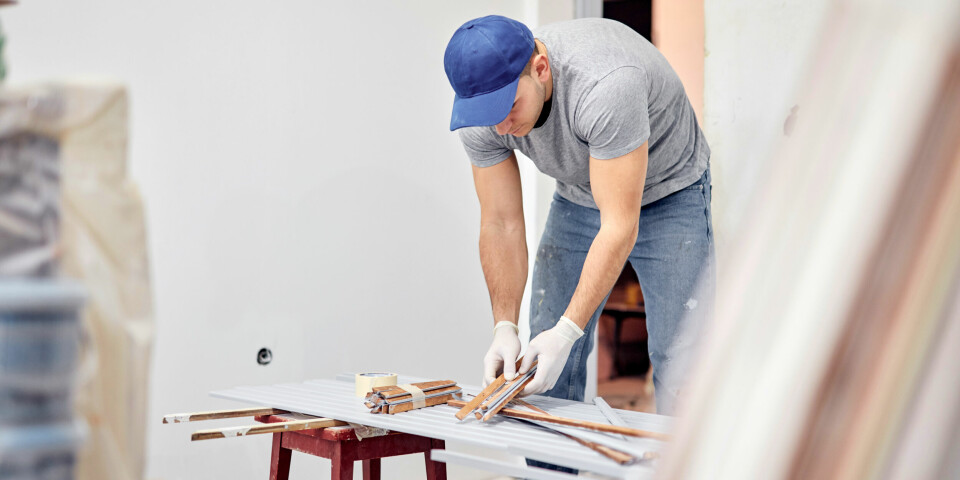-
Duck Cold! Four French phrases to use when it is freezing outside
We remind you of French expressions to use to describe the drop in temperature
-
When and why do we say le moral dans les chaussettes?
We explore this useful expression that describes low spirits
-
The origins and meaning of tirer les marrons du feu
As Christmas approaches, we look at a phrase to describe someone who takes advantage of a situation
Celebrate Pâques this year with traditions and glitter
Suggestions for an Easter feast, including a bright pink showstopper starter and a traditional lamb sponge cake dessert

Easter Sunday falls on 4th April this year, and what better excuse to turn your hand to decorating fresh eggs? For artistic reasons white-shelled ones are fabulous, although very difficult to find in the shops. If you can get them, it can also be fun to use green-blue duck eggs, or even goose eggs – which provide a much larger canvas to work on.
Before decorating them, you can either blow the eggs or hard boil them. Blowing them is a knack but essentially you make tiny holes at both ends, use a long needle to break the yoke, and simply blow the contents of the egg out into a bowl. (The older the egg, the easier it is to blow.) Otherwise, simply hard boil them. (Once cooked, cool very fast under running cold water to avoid a dark ring forming around the yolk.)
Once eggs are blown, you can use any kind of paint on them or even glue – to attach glitter, buttons, eyes, or whatever you like. You will, however, then have to keep the results forever, especially if they are made by children. Decorating hardboiled eggs means only using edible and/ or non-toxic materials, but does mean eating the results.
A good tip when out shopping in France, is to look in north African grocery stores or market stalls for edible glitter which can be sprinkled over eggshells, and edible food dye, which can either be added to water when hard boiling eggs, or used to paint the shells once they are cooked.
If you add food colouring to the water when you hard boil the eggs, you can make patterns by gently scraping the colour off the shells once they are cool. You can also use non-toxic wax crayons to draw patterns on the shells before you boil them in coloured water.
A bright pink simple starter
If you want a completely fool-proof showstopper for Easter lunch that requires no artistic talent whatsoever, then Oeufs marinés à la betterave is an easy but spectacular recipe for a starter or even an Easter brunch. You can either use raw beetroot and cook them yourself, or buy pre-cooked beetroot.
Cube 6 medium, cooked, beetroots, and hard boil the eggs. While they are cooling, bring 625ml of white vinegar, 250ml water, 275ml sugar and a pinch of salt to the boil. Once everything is cool, peel the eggs and put them in a bowl with the beetroot cubes, then cover with the marinade. Leave somewhere cool for 24 hours, strain the marinade off, and then serve the eggs cut in half longways, with the beetroot. The edges of the egg whites will be bright pink, and taste amazing!
Traditional roast lamb
If you want to be traditionally French, the main course should be lamb. For a leg roasted en croûte buy pre-rolled pâte brisée, cut the circle into wide strips and use them to cover the leg. Serve your lamb with a selection of fresh spring vegetables and white beans. Rabbit is the traditional alternative if you do not fancy lamb.
A 3D Easter sponge cake
When it comes to dessert, you can be as creative with the theme of eggs, baby chicks, and chocolate as you like. In Alsace and Lorraine, however, it is traditional to make a sponge cake in the shape of a lamb. This requires a mould, which can be bought online (search for ‘moule agneau Pascal’) but once you have that, the recipe is very straightforward. Beat two eggs with 90g of castor sugar and a sachet of vanilla sugar until the mixture is white and has tripled in volume. Add the zest of a lemon.
Sieve 75g flour and 25g of cornflower (look for fécule de maïs in the shops) into the bowl and fold in carefully. Transfer the mixture into the buttered mould, taking care not to knock the air out of it. Bake in a pre-heated oven at 180ºC for 25 minutes (until a knife comes out clean). Take it out of the oven and let it cool for a few minutes before removing it from the mould. Once it is completely cool, sprinkle generously with icing sugar and tie a satin ribbon around the neck.
Eat your lamb the same day, as it will dry out very rapidly.
























